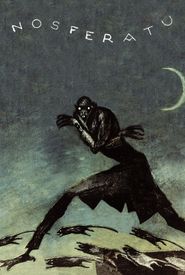F.W. Murnau was a German film director whose creative trajectory was deeply influenced by the works of Schopenhauer, Nietzsche, Shakespeare, and Ibsen, whose plays he had the opportunity to experience at the tender age of 12. This exposure had a profound impact on his artistic development, and he would later go on to form a close friendship with the renowned director Max Reinhardt.
During World War I, Murnau served as a company commander on the eastern front, where he also had a stint in the German air force. Miraculously, he survived multiple plane crashes without sustaining any severe injuries.
One of Murnau's most celebrated works is the 1922 film Nosferatu, an adaptation of Bram Stoker's Dracula. Although it failed to achieve commercial success due to copyright issues with Stoker's novel, the film is now widely regarded as a masterpiece of Expressionist cinema.
In 1926, Murnau made the bold decision to emigrate to Hollywood, where he joined the Fox Studio and went on to direct three films: Sunrise (1927),4 Devils (1928),and City Girl (1930). The first of these three films, Sunrise, is often cited as one of the greatest films ever made.
In 1931, Murnau traveled to the remote island of Bora Bora to collaborate with documentary film pioneer Robert J. Flaherty on the film Tabu. However, their artistic differences ultimately led Flaherty to leave the project, and Murnau was forced to complete the film on his own.
Tragically, Murnau's life was cut short just a week prior to the premiere of Tabu, when he succumbed to injuries sustained in an automobile accident that occurred along the Pacific Coast Highway near Rincon Beach, southeast of Santa Barbara. Only 11 people attended his funeral, including Robert J. Flaherty, Emil Jannings, Greta Garbo, and Fritz Lang, who delivered the eulogy.
Throughout his career, Murnau directed a total of 21 films, eight of which are now considered to be completely lost.
In July 2015, Murnau's grave was subjected to a disturbing act of desecration, with the remains disturbed and the skull removed by unknown persons. The site was found to contain wax residue, leading some to speculate that candles had been lit, possibly with occult or ceremonial significance. This incident was not an isolated occurrence, and cemetery managers are now considering sealing the grave to prevent further desecration.






























